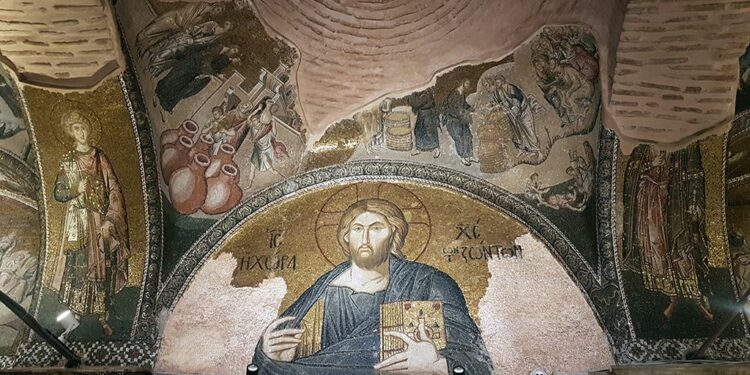Originally built as a church in the sixth century during the reign of Justinian, the current structure dates from the late 11th century and has undergone various transformations and restorations since. Chora houses unique examples of Byzantine and Christian art with its world-renowned mosaics and frescoes created between 1315 and 1321 at the request of the statesman Theodore Metochites. Before the COVID-19 pandemic, the site attracted between 8,000 and 9,000 visitors daily, drawn to its extraordinary heritage and as a testament to Constantinople’s prestigious past.
From 536 to 1511, it served as a church, then it was first converted into a mosque in 1511 by the order of Atik Ali Paşa, the grand vizier of Sultan Beyazıt II. It remained a mosque until 1948 when it became the Kariye Museum for 72 years.
Following the decision to reconvert Kariye into a mosque, the site underwent restoration work for nearly four years. The delicate mosaics and paintings have been covered with curtains in the areas designated for worship. According to an article published on the Diyanet’s website — the Directorate of Religious Affairs, an official state institution established in 1924 — two foreign tourists who visited the mosque appreciated the still visible mosaics. It has yet to be confirmed how the images have been treated in different parts of the building and what may be different with the latest restoration
In a video broadcast on the Diyanet’s television channel, the mention of “the Kariye Mosque, which is a memory of conquest like Hagia Sophia,” highlights the significance attributed to this new transformation.

Credit: Source link



